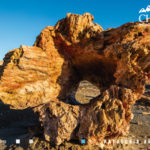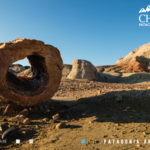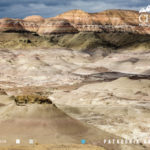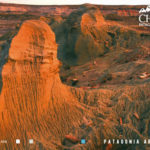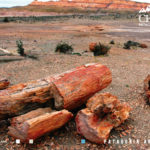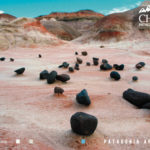Protected Natural Area Sarmiento Petrified Forest
The Sarmiento Petrified Forest is a Specific Purpose Tourist Nature Reserve, created in 1970 to protect one of the largest accumulations of petrified wood in Patagonia. It covers 1,880 hectares of the Patagonian Steppe – Monte de Llanuras y Mesetas, located in the Department of Sarmiento, 30 km south of the town of the same name.
Its conservation objectives include:
- Conserve long-term natural and cultural attributes and qualities and established evolutionary and ecological processes;
- Guarantee the public use of levels that contribute to the physical and spiritual well-being of visitors, reserving the natural and cultural attributes for current and future generations;
- Promote and facilitate environmental investigations and monitoring, as main associated management activities;
- Raise awareness of the importance of conservation of the area to users of the protected natural area and to the inhabitants of the region, through interpretation and environmental education;
- Establish a responsible management system for the management of the area.
The Sarmiento Petrified Forest was organized as a tourist attraction and, in its management plan, it was assigned the category of Natural Monument management, which is defined as: the area that contains one or more specific natural or natural / cultural characteristics of outstanding value or exceptional for its implicit rarity, its representative or aesthetic qualities of cultural importance.
Outstanding landscape features:
It is essential to note that vestiges of flora and fauna from the Mesozoic – Cretaceous, Cenozoic – Lower Tertiary and Quaternary periods were identified in the reserve. Nature offers numerous examples of panoramic beauty. Among them, those corresponding to the inorganic world, are usually imposing: different polychrome rock formations, erosions with exotic forms, large mountains, volcanoes, among others. But among these manifestations, testimonies of past life are infrequent, which therefore acquire special significance.
The archaeological and paleontological sites are non-recoverable relics, and therefore, unique. Petrified forests are, in this context, true rarities that have a very special impact when they are first seen.
Outstanding flora and fauna species:
Currently the area is home to a wide variety of flora, birds and mammals, among which stand out: molle, carob, mata guanaco, calafate, yaoyín and quilimbay in terms of vegetation. On the other hand, regarding the presence of birds, we can mention the barranquero parrot, choique, martineta, red-headed jote, blackberry eagle, ashy hawk, chimango, carancho, plumed falcon, common falcon, ñacurutú, lechucita de las vizcacheras, lechuzon field; and with respect to the guanaco, gray fox, Patagonian piche, wild cat and cougar mammals.
Tourism
The conservation and enhancement of the area is of fundamental importance in terms of research, safeguarding of the cultural resource and preservation of the current habitat and biodiversity.
In this framework, as if we could establish a timeline in the place, we can speak of the coexistence of two worlds, one extinct, that reigned in the past where dinosaurs, forest and sea had their preeminence; and the current one, in which the Patagonian steppe, mountains, plains and plateaus with their native beauty gives it an identity with a singular appeal.
How to get;
There are two possible access routes:
- To the east, from Comodoro Rivadavia on National Route No. 26 to Sarmiento and then on Provincial Route No. 23.
- To the west, from Esquel the National Route No. 40, Provincial Route N° 20 and National Route N° 26 to Sarmiento and then along Provincial Route N° 23.
Conservation Objective
Conserve natural and cultural attributes, evolutionary and ecological processes; guarantee public use; facilitate investigations and monitoring; conservation awareness; establish a responsible management system.






